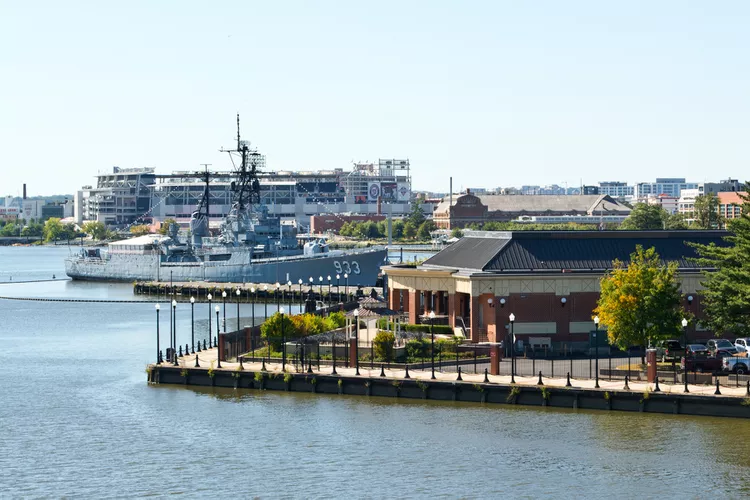Museum Overview
The Washington Navy Yard, a former shipyard for the United States Navy, is home to the Chief of Naval Operations and serves as the headquarters for the Naval Historical Center in Washington. Visitors have the opportunity to explore the National Museum of the U.S. Navy and the Navy Art Gallery, where they can discover the Navy’s rich history from the Revolutionary War up to the present day. Although the Washington Navy Yard is somewhat removed from the typical tourist path in Washington, it is a fascinating destination for families. Please note, security is stringent at this attraction, and there are specific entry restrictions. Visitors without military credentials will need to undergo vetting by the Visitor Center staff before gaining entry, Monday through Friday. Additionally, museum staff members are not authorized to escort visitors on weekends.
The Navy Museum at the Washington Navy Yard features engaging interactive exhibits and showcases various naval artifacts, models, documents, and fine art. Notable exhibits consist of model ships, undersea vehicles, submarine periscopes, a space capsule, and even a decommissioned destroyer. Special events are organized throughout the year, which include workshops, demonstrations, storytelling, and musical performances. The Navy Art Gallery highlights the creative works of military artists.
How to Visit
Entry to the grounds occurs at the 11th and O Street gate. The Washington Navy Yard is located along the Anacostia River, close to Nationals Park, which is Washington’s baseball stadium. The neighborhood is experiencing revitalization, enhancing its appeal and accessibility. The nearest Metro station is Navy Yard. Be advised that parking is very limited on the Washington Navy Yard premises. To drive onto the base, vehicle registration and proof of insurance or a rental agreement are necessary. Paid parking is also available in the lot adjacent to the Navy Yard, located at the intersection of Sixth and M Street SE. The museum operates Monday through Friday from 9 a.m. to 5 p.m., while on weekends and federal holidays, hours are from 10 a.m. to 5 p.m.
Admission to the museum is free. Both guided and self-guided tours can be arranged upon request. Visitors must carry a Department of Defense Common Access Card, an Active Military, Retired Military, or Military Dependent ID, or must be accompanied by someone holding one of these credentials. Moreover, all visitors aged 18 and older are required to present a photo ID.
Navy Museum Galleries
The galleries within the museum are likely to captivate historians, naval enthusiasts, and anyone interested in the U.S. Navy’s storied past.
- The Forgotten Wars of the 19th Century: This exhibit explores the Quasi-War with France, the Barbary Wars, the War of 1812, and the Mexican War.
- Dive! Dive! U.S. Navy Submarines: Interactive displays highlight the 200-year history of submarines in U.S. defense.
- The American Revolution and the French Alliance: Artifacts featured include swords and firearms from the Revolutionary period, portraits of John Paul Jones, and personal effects of the Continental Marines.
- Navigation: Visitors can see navigation devices such as quadrants, sextants, compasses, and charts.
- Civil War: Securing the Seas for Union Victory: This exhibit details how the Union’s naval blockade, innovative technologies, and strong leadership contributed to victory during the Civil War.
- Spanish American War: Artifacts examine the U.S. involvement in the Spanish colonial conflict in Cuba, the Caribbean, and the Philippines.
- Polar Exploration: Artifacts showcase the Navy’s historical exploration efforts in the Arctic and Antarctic.
- The U.S. Navy and World War I: This exhibit demonstrates how the Navy played a critical role in World War I, featuring various artifacts.
- The U.S. Navy and World War II: This extensive exhibit, the largest and most comprehensive regarding the Navy’s role in World War II, is divided into the Atlantic and Pacific theaters and the home front, presenting the conflict in chronological order.





